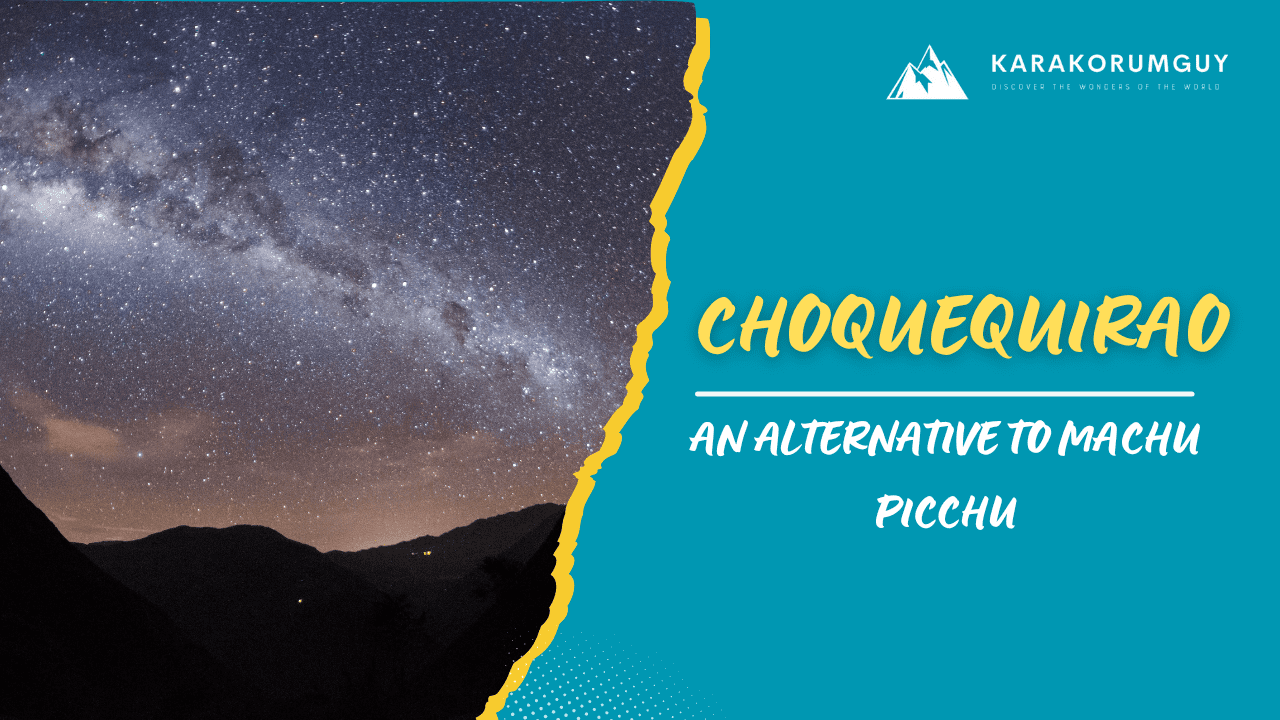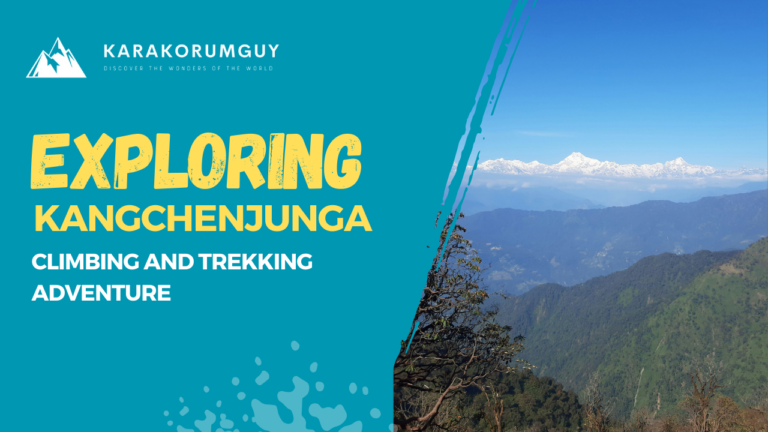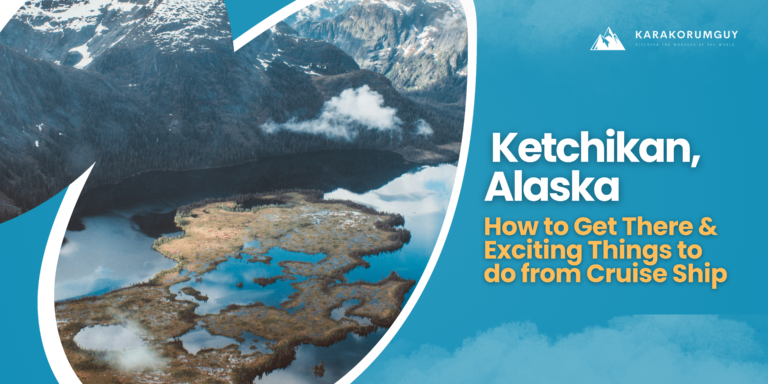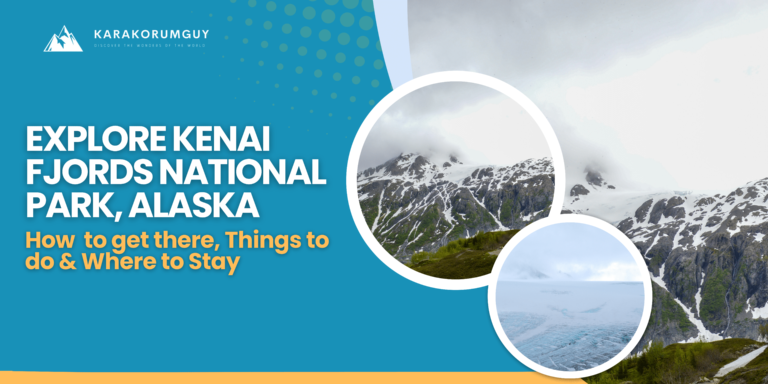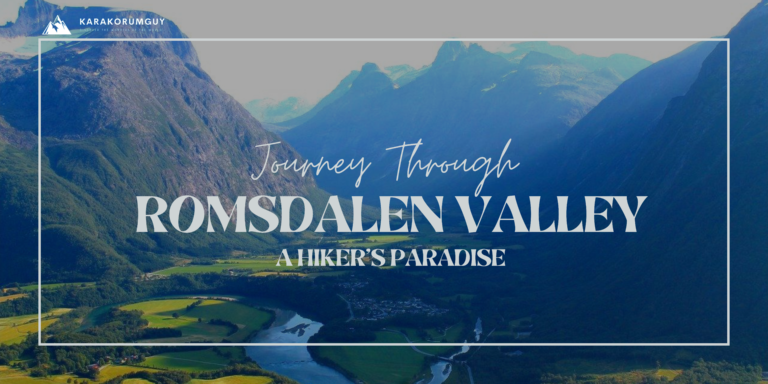Choquequirao: Make the Most of Your Visit
“Are you ready to venture off the beaten path and discover the secrets of Choquequirao, the ‘Other Machu Picchu’? This ancient Inca city is hidden deep in the Andes, waiting for you to uncover its mysteries…“
In this blog post, we’ll delve into the mysteries of Choquequirao. We’ll explore its history, significance, must-see attractions, and trekking options. Additionally, we’ll cover everything you need to know to plan your trip, like what to bring, safety guidelines and best time to visit. Furthermore, this guide will help you in deciding between solo vs group tour, where to stay, and how to get there.
So, whether you’re a history buff, a nature lover, or an avid trekker, Choquequirao has something to offer for everyone. Let’s dive in and discover the secrets of this destination together!
Choquequirao: Introduction
Choquequirao is an ancient Inca site in Peru’s Andes Mountains. It’s often called the “sister city” of Machu Picchu. Because of their similar architecture and cultural significance. While Machu Picchu is crowded, Choquequirao offers a similar experience with a more peaceful atmosphere. Ultimately, this site is perfect for adventure seekers and history enthusiasts. Thus, it’s a must-visit destination for an immersive experience.
Elevation of Choquequirao
The elevation of Choquequirao is approximately 3,050 meters (10,007 feet) above sea level. This majestic archaeological complex sits high in the Andes Mountains. Hence, it offers breathtaking views and a glimpse into the rich history of the Inca.
An Overview of Choquequirao’s History
Choquequirao was built in the 15th century during the reign of the Inca emperor Pachacuti. And it is served as a sacred site and ceremonial center. However, before the arrival of the Spanish conquistadors, the site had been abandoned. It remained hidden for centuries, earning it the nickname “the Lost City of the Incas.” But today, it is an important cultural and historical site and considered one of the most significant tourist attractions in Peru.
Why Choquequirao Is Worth Your Visit?
Choquequirao carries profound cultural, historical, and spiritual significance. Here are some of the key significance of Choquequirao:
1. Cultural Heritage:
Firstly, Choquequirao is one of the most significant Inca sites after Machu Picchu. It offers valuable insights into Inca architecture and society. These insights enrich our understanding of their history and culture.
2. Spiritual Importance:
Secondly, many believe Choquequirao to be a sacred site. They think it is filled with ancient energy and spiritual power. Thus, it attracts spiritual seekers and those intrigued by its mystical aura.
3. Architectural Marvel:
In addition to this, the site showcases impressive Inca architecture and engineering. It has terraces, temples, and irrigation systems, reflecting advanced knowledge in construction and water management.
4. Natural Beauty:
Furthermore, Choquequirao is surrounded by breathtaking landscapes. It has towering mountains, cascading waterfalls, and lush forests. Consequently, this setting enhances its allure and offers visitors a harmonious mix of cultural and natural wonders.
5. Adventure Destination:
Moreover, its remote location and challenging trekking routes appeal to adventure enthusiasts. It offers a thrilling journey, rewarding views for those who explore off-the-beaten-path places.
6. Cultural Exchange Hub:
Furthermore, Choquequirao is a platform for cultural exchange. It fosters connections between visitors and local communities. Hence, promoting understanding and appreciation of Andean traditions.
7. Economic Impact:
Additionally, tourism to Choquequirao contributes to the economic development of surrounding communities. It creates employment opportunities and supporting local livelihoods while preserving cultural heritage.
8. Archaeological Significance:
Choquequirao is an important archaeological site. It offers researchers valuable insights into Inca history, societal structure, and urban planning. These insights contribute to a broader understanding of Andean civilizations.
9. Conservation Focus:
Notably, efforts to protect and preserve Choquequirao reflect its importance as a cultural and natural heritage site. It ensures its integrity for future generations to explore and appreciate.
10. Alternative Destination:
Lastly, Choquequirao provides a quieter and more authentic alternative to Machu Picchu. It allows visitors to experience Peru’s rich history and natural beauty in a less crowded setting.
Exploring Choquequirao: Trekking Adventures in the Peruvian Andes
Trekking to Choquequirao is a thrilling adventure. The trek takes you through lush cloud forests, scenic valleys, and ancient Inca ruins. The hike is hard. But, it’s worth it for the stunning Andean mountain views. With its rich history and stunning natural beauty, Choquequirao is a trekker’s paradise.
So, here are some trekking options for Choquequirao:
1. Choquequirao Trek (Classic Route):
Description:
The classic Choquequirao trek takes you on a journey through stunning landscapes. The landscapes include dense forests, steep valleys, and rugged mountains. You’ll hike along ancient Inca trails. Also pass small villages and cross suspension bridges over roaring rivers. Moreover, the trek’s highlight is exploring the splendid ruins of Choquequirao.
Duration: 4-5 days
Difficulty: Moderate to challenging
Altitude: Ranges from approximately 1,500 meters (4,921 feet) to 3,033 meters (9,951 feet).
2. Choquequirao to Machu Picchu Trek:
Description:
This epic trek combines the adventure of Choquequirao with the iconic Machu Picchu. You’ll trek through remote Andean communities, ascending high mountain passes and descending into lush valleys. Along the way, you’ll witness diverse flora and fauna before reaching the awe-inspiring Machu Picchu. It is one of the New Seven Wonders of the World.
Duration: 8-9 days
Difficulty: Challenging
Altitude: Ranges from approximately 1,500 meters (4,921 feet) to 4,215 meters (13,829 feet).
3. Choquequirao via Cocamasana Route:
Description:
The Cocamasana route offers a unique perspective of Choquequirao. It starts from the village of Cachora. As you hike through rough terrain and wilderness, you’ll see panoramic views of the Apurimac Canyon. This less-traveled route provides an opportunity to immerse yourself in the tranquility of the Andes.
Duration: 5-6 days
Difficulty: Moderate to challenging
Altitude: Ranges from approximately 1,500 meters (4,921 feet) to 3,033 meters (9,951 feet).
4. Choquequirao to Vilcabamba Trek:
Description: Embark on a challenging trek from Choquequirao to Vilcabamba. It is another hidden gem of Inca civilization. This route takes you off the beaten path, traversing remote mountain passes and verdant valleys. Additionally, you’ll encounter traditional Quechua communities. Furthermore, witness the rich cultural heritage of the Andean people while exploring the lesser-known ruins of Vilcabamba.
Duration: 6-7 days
Difficulty: Challenging
Altitude: Ranges from approximately 1,500 meters (4,921 feet) to 3,700 meters (12,139 feet).
5. Choquequirao Short Trek:
Description:
The short Choquequirao trek offers a condensed version of the classic route. It is ideal for those with limited time. Despite its shorter duration, this trek is not short on adventure. Because, it has steep ascents and descents through rugged terrain. However, you will witness the best of Choquequirao in a shorter timeframe.
Duration: 2-3 days
Difficulty: Moderate to challenging
Altitude: Ranges from approximately 1,500 meters (4,921 feet) to 3,033 meters (9,951 feet).
Essential Gear and Equipment List for Visitors of Choquequirao
Before embarking on a journey to Choquequirao, preparation and planning are crucial. So, here’s a comprehensive list of gear and equipment you should consider bringing:
1. Backpack:
- Firstly, you’ll need a sturdy and comfortable backpack to carry all your essentials during the hike.
2. Clothing:
Secondly, for your clothing essentials, ensure you have:
- Moisture-wicking shirts and pants
- Lightweight, breathable layers for variable weather
- Warm jacket or fleece for cooler evenings
- Rain gear (jacket and pants) or poncho for unexpected showers
- Hat or cap for sun protection and gloves (if visiting during colder months)
3. Hiking Gear:
Next, you’ll need hiking gear, which includes:
- Trekking poles for stability and support on steep trails
- Lightweight, compact tent if camping overnight
- Sleeping bag suitable for the expected temperature range
- Sleeping pad for insulation and comfort
4. Hydration:
In addition to this, for staying hydrated, make sure to bring:
- Water bottles or hydration reservoir with a capacity for the duration of the hike
- Water purification tablets or filtration system
5. Food and Snacks:
Furthermore, before setting off on your outdoor adventure, ensure you have:
- Lightweight, high-energy snacks such as nuts, dried fruits, and energy bars
- Meals for the duration of your hike if not provided by a tour company
6. Navigation:
Additionally, navigation is critical to ensure you stay on course. So, here is a list of navigation gear:
- Detailed map of the area and/or GPS device
- Compass or navigation app on your smartphone
- Guidebook or information about the trail
7. First Aid Kit:
Moreover, have the following items in your first aid kit:
- Basic first aid supplies including bandages, antiseptic wipes, pain relievers, and blister treatment
- Personal medications and any necessary prescriptions
8. Sun Protection:
Additionally, ensure you’re shielded from the sun with:
- Sunscreen with high SPF
- Lip balm with SPF
- Sunglasses with UV protection
9. Personal Care:
Moreover, for personal hygiene, remember to bring:
- Biodegradable soap and toiletries
- Hand sanitizer or wet wipes
- Toilet paper and trowel for responsible waste disposal
- Insect repellent
10. Emergency Supplies:
Furthermore, it’s crucial to have emergency supplies on hand in case of unexpected situations. These include:
- Whistle for signaling in emergencies
- Multi-tool or knife
- Lightweight emergency shelter (e.g., emergency bivvy or space blanket)
11. Miscellaneous:
In addition to these essentials, there are several miscellaneous items to consider:
- Camera or smartphone for capturing memories
- Extra batteries or portable charger for electronic devices
- Plastic bags for waterproofing and waste disposal
- Cash for park fees, souvenirs, and tipping guides/porters
Note: Pack smart and pack light. Remember to consider the weight you’ll need to carry throughout the hike.
Safety Guidelines
When visiting Choquequirao, it’s essential to prioritize safety. So, here are some precautions to keep in mind:
- Firstly, stay on paths and trails. This will prevent harm to archaeological sites and habitats.
- Secondly, carry sufficient water and snacks for the duration of your visit.
- Also, wear sturdy hiking shoes with good traction to navigate the rugged terrain safely.
- In addition to this, protect yourself from the sun. Do this by wearing sunscreen, a hat, and sunglasses, especially during peak hours.
- Moreover, bring insect repellent to ward off mosquitoes and other pests.
- Furthermore, pack a first aid kit with essentials. It includes bandages, antiseptic wipes, and pain relievers.
- Additionally, respect local flora and fauna by refraining from picking flowers or disturbing wildlife.
- Dispose of waste properly in bins or by carrying it out. This keeps the area clean.
- Be mindful of altitude sickness, as Choquequirao is situated at high elevation. Take breaks as needed and drink plenty of water to stay hydrated.
- Lastly, consider hiring a knowledgeable guide. Because, they will make your experience richer and keep you safe on the trails.
Solo Trek Vs Guided Tours
The choice between a solo and guided tour of Choquequirao depends on your preferences and comfort. So, here are the advantages and disadvantages of each option:
1. Solo Trek:
- Freedom: You have complete control over your itinerary, pace, and activities. You can linger longer at sites that interest you or change plans on a whim.
- Challenge: Trekking solo can be tough both physically and mentally, as Choquequirao is a remote place. So, you’ll need to navigate trails, manage supplies, and handle any emergencies.
- Cost: Generally, solo treks are cheaper. Because, you’re not paying for a guide or group expenses. However, you’ll need to budget for gear, permits, and other necessities.
Guided Tour:
- Expertise: Firstly, with a guide, you can take benefit from their knowledge. They know the area’s history, culture, and wildlife. So, they can provide insights, point out landmarks. Hence, enhance your overall experience.
- Safety: Secondly, guides increase safety. They cut the risks of getting lost, hurt, or meeting wildlife. Because, they’re trained to handle emergencies and ensure everyone’s well-being.
- Logistics: Furthermore, organized tours take care of permits, transportation, meals, and accommodation. They make planning easier and let you focus on the trek.
- Group Dynamics: Lastly, join a tour means trekking with other travelers. This can add to the social experience and create a sense of camaraderie. However, it also means compromising on some aspects of your itinerary and pace.
Best Time to Visit Choquequirao
The best time to visit Choquequirao is during the dry season. It typically runs from May to September. During these months, you’ll experience sunny days with minimal rainfall. This weather is ideal for trekking and exploring the ruins. Additionally, the landscapes are lush and green after the rainy season. Hence, offering breathtaking views of the surrounding mountains and valleys.
However, keep in mind that this is also the peak tourist season. Therefore, expect larger crowds and higher prices for accommodations and tours. Additionally, consider visiting Choquequirao in April or October for fewer tourists and a peaceful experience. Furthermore, avoid visiting during the rainy season from November to March, as heavy rains can make trekking trails slippery and difficult to navigate.
Transportation Guide to Choquequirao
To reach Choquequirao, you typically start from Cusco, Peru. So, here’s a general guide:
1. Travel to Cusco:
Firstly, if you’re not already in Cusco, you’ll need to get there first. You can fly into Cusco’s Alejandro Velasco Astete International Airport from major cities like Lima. Or, you can take a bus from various locations in Peru.
2. Travel to Cachora:
Then from Cusco, take a bus or taxi to the town of Cachora. It is the starting point for most treks to Choquequirao. Moreover, this journey takes around 4-5 hours by road.
3. Begin the Trek:
Furthermore, the trek to Choquequirao usually starts from Cachora. From there, it’s about a 2-day hike to reach the archaeological site. Furthermore, you can hire a guide and mules to carry your gear if you prefer.
4. Arrive at Choquequirao:
After hiking through beautiful landscapes and crossing the Apurimac River, you’ll arrive at Choquequirao. Take your time exploring the ruins and soaking in the breathtaking views.
5. Return to Cachora:
Then after spending time at Choquequirao. Trek back to Cachora following the same route.
6. Return to Cusco:
Once back in Cachora, you can take a bus or taxi back to Cusco to continue your journey or head home.
Accommodation Options Near Choquequirao
Choquequirao itself has no places to stay. But, there are a few nearby options which are as follow:
1. Camping:
Firstly, many travelers camp near Choquequirao. They bring their own gear or rent it in Cachora, the nearest town. Moreover, you can set up tents and spend the night at the designated camping areas.
2. Lodges and Guesthouses:
Moreover, some locals offer basic lodging in Cachora and nearby villages like Santa Rosa and Marampata. The lodgings range from simple guesthouses with shared facilities to more comfortable lodges. The lodges have private rooms and hot showers. However, amenities may be limited. So, it’s advisable to inquire about the facilities before booking.
3. Tents or Glamping:
Furthermore, for those who prefer a more comfortable camping, companies offer luxury camping, near Choquequirao. These packages include roomy tents with beds and linens. They also include meals prepared by a private chef. They let travelers enjoy the Andes’ beauty without giving up comfort.
4. Homestays:
Lastly, some local families in the surrounding villages offer homestay experiences. So, travelers can stay with a host family and experience Andean hospitality. This option provides a rare chance to immerse in local culture. You can learn about traditional customs and enjoy homemade meals with local ingredients.
Must-See Attractions
Here are some must-see attractions when visiting Choquequirao:
1. Main Plaza (Hanan):
This large plaza was likely the heart of Choquequirao. It is surrounded by important ceremonial and administrative buildings. Furthermore, it offers a breathtaking view of the surrounding mountains.
2. Terraces:
Choquequirao is built on steep terraced slopes. It showcases the Inca’s impressive agricultural engineering. These terraces are not only functional but also add to the site’s dramatic beauty.
3. Main Temple:
At the highest point of the site lies the main temple. It has impressive stonework and offers insight into Inca religion.
4. Llama Terraces:
One of Choquequirao’s most iconic features is the series of llama-shaped terraces. They are carved into the mountainside. These terraces had practical purposes for farming. Also, they had symbolic importance in Inca culture.
5. Sacred Plaza (Urin):
It is another important plaza in Choquequirao. It is likely used for ceremonies and surrounded by important structures.
6. Sun Gate:
Similar to Machu Picchu, Choquequirao also has a Sun Gate. This Sun Gate is believed to have served as an astronomical observatory and marked important celestial events.
7. Llama Enclosure:
The Incas likely used this enclosure to house llamas or other domestic animals. It provides insight into the daily life of the people who inhabited Choquequirao.
8. Residential Areas:
Explore the Residential sectors of Choquequirao. The preserved stone houses and narrow streets offer a glimpse into the daily lives of the city’s ancient inhabitants. Therefore, they provide a unique opportunity to explore how people lived, worked, and thrived in this historic city.
9. Access Trails:
The trails leading to Choquequirao are not part of the archaeological site itself. They offer stunning views of the landscape and are a key part of the experience.
10. Wildlife:
Choquequirao is in a biodiverse region. So, keep an eye out for unique flora and fauna while exploring the site and its surroundings.
Conclusion
In conclusion, Choquequirao is a hidden gem of Peru. It offers a unique and unforgettable experience for adventure seekers and history enthusiasts. It has rich history, stunning architecture, and breathtaking natural beauty. Thus, It’s a must-visit destination that will leave you in awe.
Hope you found this article on Choquequirao helpful!
If you want to explore more, Click here to discover other destinations in Peru.

